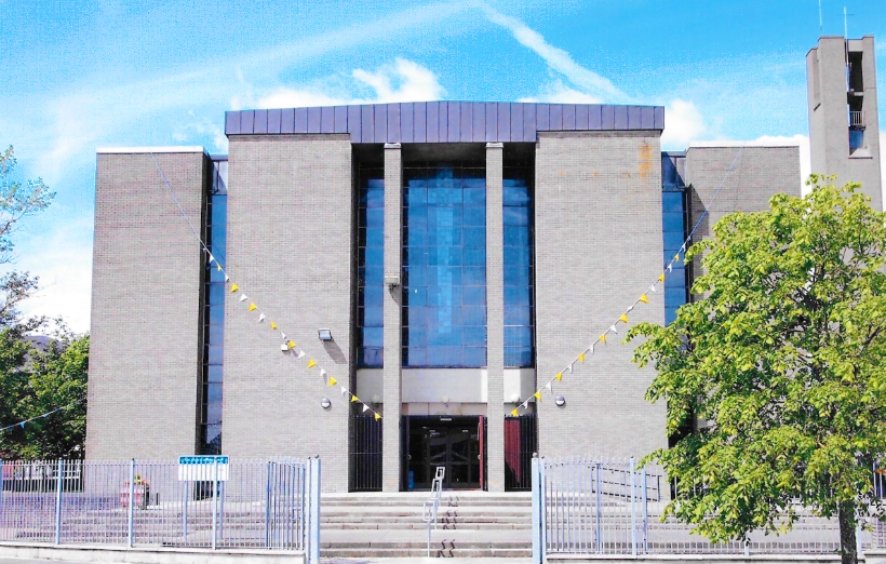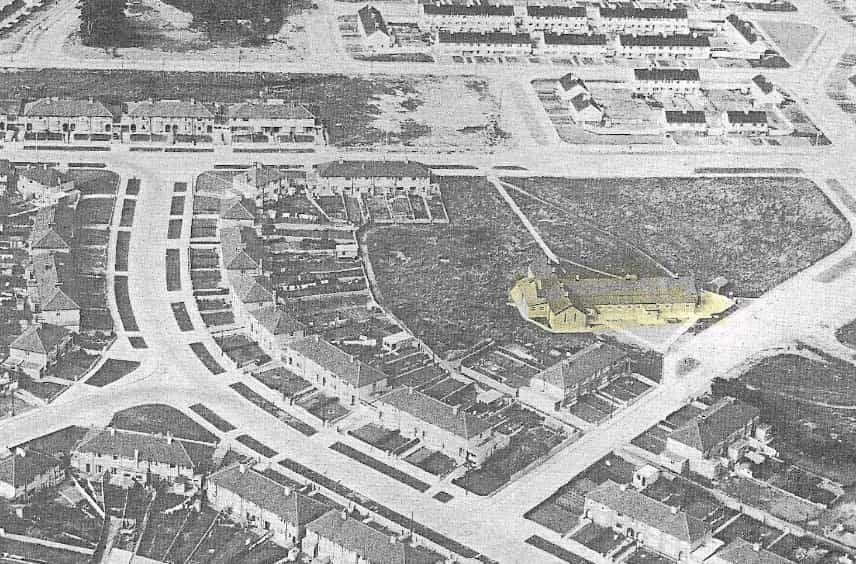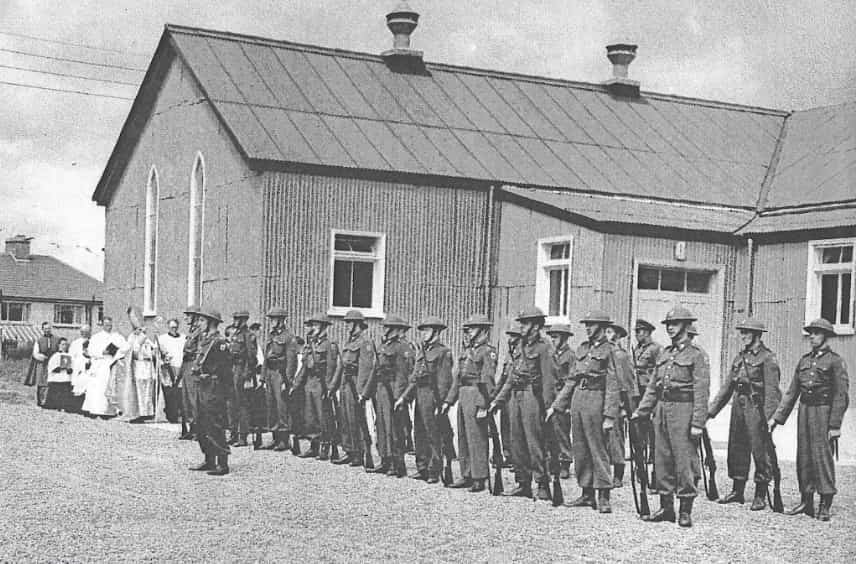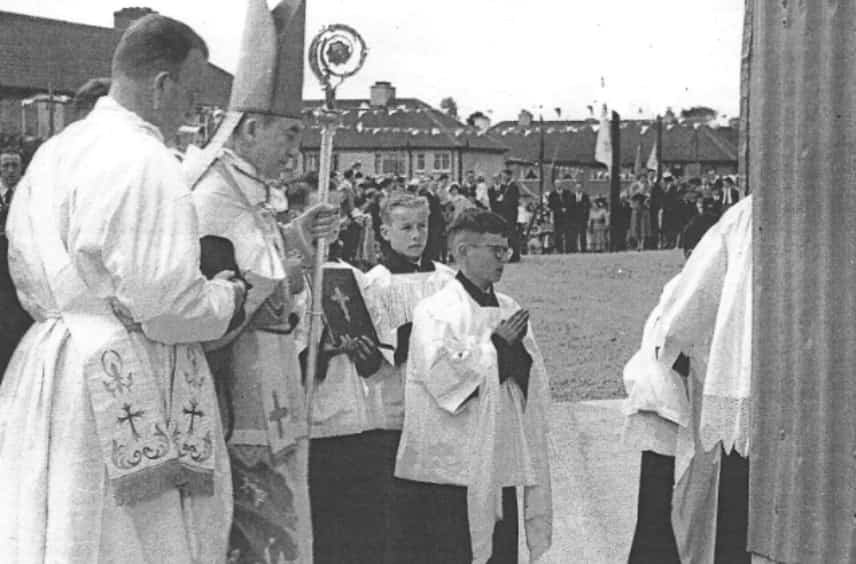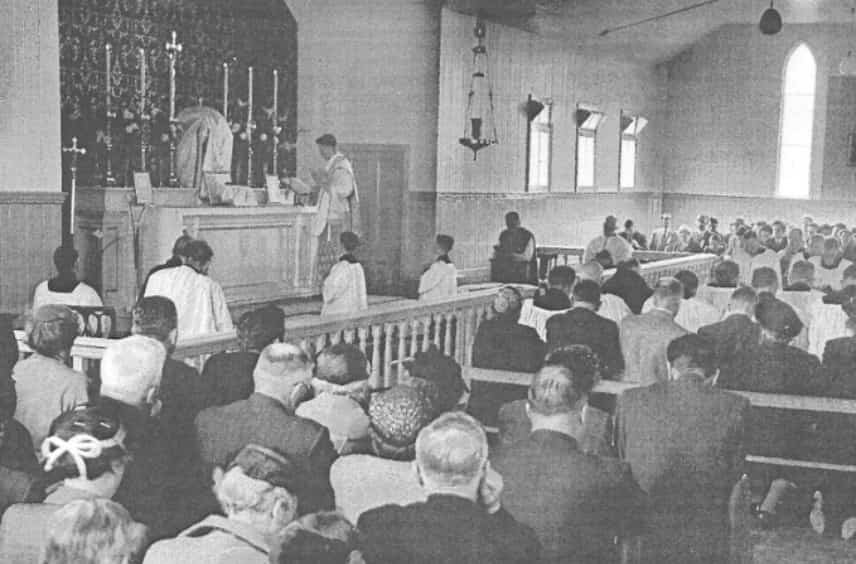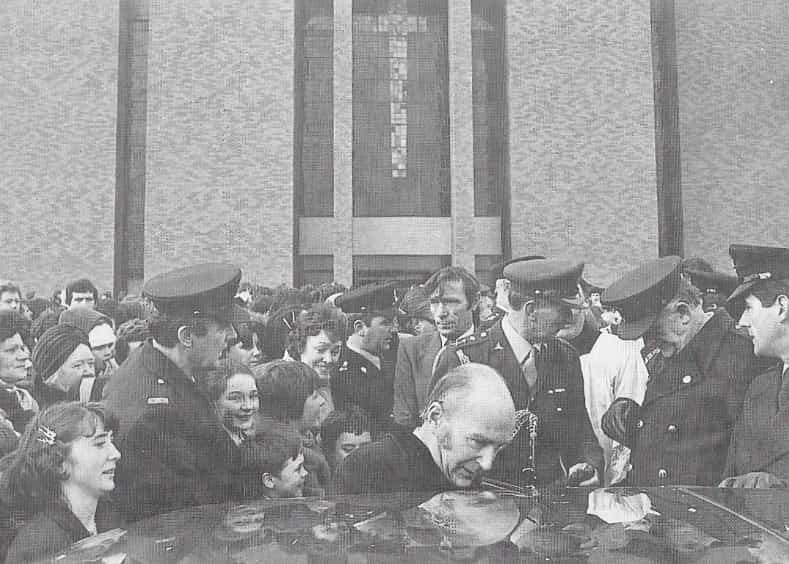In the late 1940's from Howth Road to Killester to the main Malahide Road Artane was an expanse of nurseries of bedding plants; dandelion and daisy dotted green meadows and sparsely placed heather-covered rocks. Serene and silent it lay - then as if an Archangel with feathery dove-like wings spread those wings over the scene - life entered the garden in the shape of red bricks; limestone; sand and cement. Woolly hatted men in designer turned down galoshes swayed like tight rope walkers on 2ft. planks with barrows of cement mix, bricks and wood, as they whistled and joked and worked well into the night to finish the houses that would make Artane into a living vibrant community.
The building boom was in progress; unemployment was a dirty word; everyone seemed to be entering a more prosperous phase of their lives and we were all convinced that was the way it was going to remain. Hope hovered in the air like a bright silvery cloud. We were alive; we had ambition; we were part of the new generation that was going to bring about a new Ireland and a new world.
There was no church building in Artane at that time. Coolock housed the parish church and it incorporated Raheny, Coolock and Artane. Monsignor Fitzpatrick was the parish priest and he resided in Killester. Father Corridan, now retired and living in Sandford, was senior curate in St. Brendan of Kerry, The Navigator, Church in Coolock and he was given the task of seeing to the new arrivals at Artane. He welcomed each family and blessed the houses. The people still talk of how delighted they were with his friendly personal greetings. They also speak of how hard he worked to establish Artane as a parish. So that people in Artane could attend Sunday Mass he arranged with C.I.E. for special Mass buses to be laid on every Sunday at 10.30 in Coolock and at 12.30 in Donnycarney. The more fit among the residents walked a couple of miles to attend Killester Church, while the more daring risked life and limb, muck and the frightening experience of a watching beady eyed rat, not to mention prosecution by the farmer - and crossed the farmland and railway lines which has now been transformed into the two railway bridges for the Dart. at Harmonstown and the one leading to the bungalows flat complex and houses at the Howth Road end of Brookwood Avenue to reach St. Brigid's church, Killester. The love for the Mass was very strong then.
The need for a church for the districts of Coolock, Artane and Ardlea which was blossoming into life at that time, became very evident and fund raising seemed to be the only solution as direct giving would not meet the need. Ardlea and Killester became parishes and the parish of Coolock - Artane was founded in 1955. The 2.150 families were given the name of Coolock Parish with the temporary tin church acquired from Cabra West blessed by Archbishop McQuaid and dedicated to Our Lady of Mercy in July 1955 serving the families of Artane. Father Corridan asked each family to contribute £1 towards the seating in the tin church which most duly did, although £1 was a lot of money in those days.


